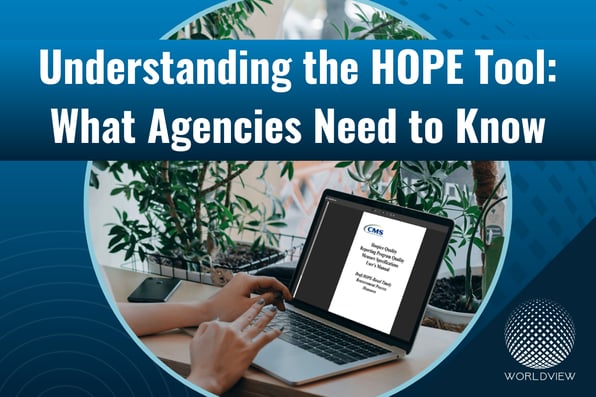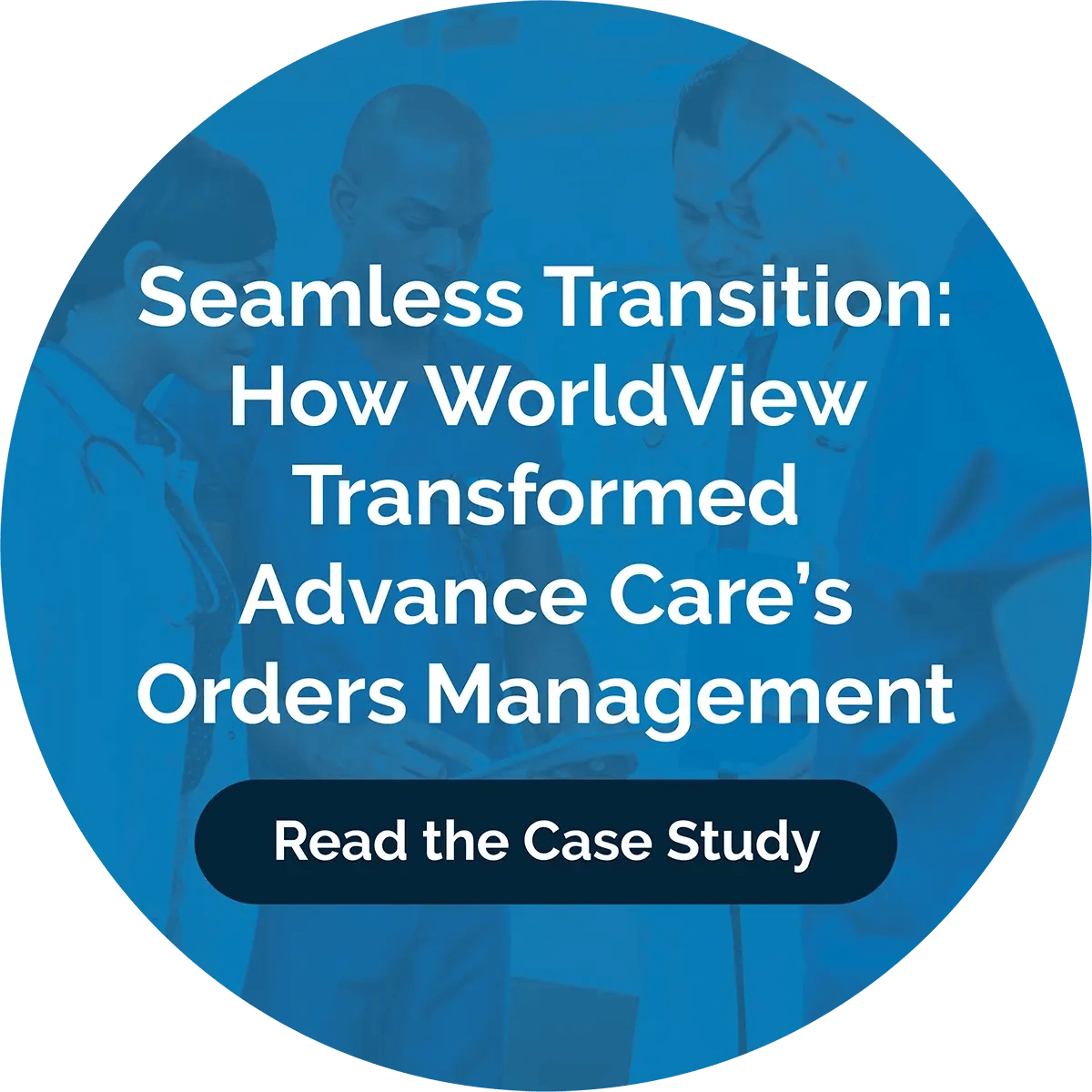Understanding the HOPE Tool: What Hospice Agencies Need to Know

The Centers for Medicare and Medicaid Services (CMS) has introduced new rules for assessing care quality for hospice patients. The Hospice Outcomes and Patient Evaluation (HOPE) tool aims to better understand patient needs and increase flexibility in payment refinements.
Prior to HOPE’s introduction in 2025, CMS collected patient data at admission and discharge only. Under the old system, called the Hospice Item Set (HIS), hospices provided medical record data but not patient assessment data. HIS evaluated care providers using only retrospective data from charts.
HIS will remain in place until September 30, 2025. When HOPE is fully implemented on October 1, 2025, hospice providers will have to submit additional patient data in order to receive reimbursement for patient care. The HOPE tool is the next step in standardized patient assessments.
While improving patient care is a goal of the HOPE tool, it also introduces new obligations that hospices may find challenging. By transitioning out of legacy record systems and adopting new technologies, hospices can better comply with HOPE regulations and demonstrate their adherence to CMS quality care standards.
What is the HOPE Tool?
The HOPE tool for hospice is designed to move beyond the HIS assessments to offer more comprehensive evaluations. HIS is not a patient assessment tool; it's a standard way to measure medical record data. HOPE brings patient data into greater focus by including patient assessments.
HOPE aims to individualize care by capturing patient needs in real time. The greater focus on patient-centered data also takes into account family care needs and individual clinical care requirements. The results should be enhanced hospice quality reporting, which should benefit patients and provide a new framework for hospice care.
How Will HOPE Change Hospice Reporting?
HOPE will require hospices to provide more patient data than HIS. Data will be gathered through detailed patient assessments at multiple time points during a hospice stay. These additional assessments are called HOPE Update Visits (HUVs). They allow CMS to obtain patient data within 30 days of a person’s decision to stay in hospice.
Depending on how long a patient is in hospice, the organization may need to submit up to two HUVs. This data is used to evaluate changes in patient outcomes to inform adjustments in care plans. It also measures the hospice’s adherence to quality standards and progress toward quality improvement.
HOPE focuses more on real-time data instead of retrospective reporting. Since some of this information may be made public, it can also contribute to individuals’ assessments of hospices. The goal for both CMS and the industry is to enhance accountability and transparency in quality assessments.
As CMS gathers HOPE data, it may use this information to tailor future reimbursement models for hospice care. It's, therefore, essential for hospices to comply with HOPE guidelines to maintain care quality and protect their reputation.
What Hospice Agencies Need to Do to Prepare
Hospice agencies face increased scrutiny and must demonstrate care quality throughout a patient's stay. Under HOPE, CMS reviews not only admission and discharge data but also real-time patient care during hospice.
To prepare for this new level of oversight, hospices should take the following steps:
Train staff. Documentation and administrative procedures are more critical under HOPE. Staff must understand the new CMS assessment requirements and proper documentation practices.
Understand data collection workflows. Interdisciplinary teams play a key role in enhancing patient care quality. All members of these teams have to prioritize data collection and work within aligned systems to ensure accurate CMS reporting.
Give CMS the data structure it requires. Electronic medical records (EMRs) should align with the data structure of HOPE systems. Hospices should communicate with their EMR provider to assess whether the data structure is appropriate for the HOPE framework.
Consider automation. Technology can minimize manual data entry and reduce errors, ensuring CMS has an accurate picture of the quality of service the hospice provides.
How WorldView Supports Agencies in the HOPE Transition
WorldView is a leading provider of technology solutions for hospice care. As the transition to HOPE approaches, WorldView equips clients with advanced tools to help them meet new requirements, ensuring care quality remains high and reimbursements continue without interruption.
WorldView offers:
- Document automation and AI-driven workflows to simplify quality reporting
- Integration with existing hospice EMRs for better data collection
- Stronger compliance management with automated tracking and alerts
Prepare for the HOPE Transition with WorldView Today
The transition to the HOPE tool changes hospice reporting from retrospective analysis to real-time patient data. Hospices that depend on CMS funding must prepare for expanded data collection and detailed reporting requirements.
Agencies can stay ahead with advanced technology like WorldView’s Stronger Together Bundle, which includes vital tools like Vivid Health, Care Coordinations, and SimiTree.
WorldView specializes in helping hospice teams adapt to evolving regulations through automated workflows, real-time documentation tools, and smooth EMR integration. Our trusted partners in the Stronger Together Bundle provide the technology and expertise agencies need to navigate compliance challenges with confidence.
Contact WorldView today to learn how our solutions can support your transition to HOPE.
Get Awesome Content Delivered Straight to Your Inbox!
Posts by topic
- Healthcare
- Business
- AI
- Hospice
- AP Workflows
- Home Care Management
- hospice-care
- General
- Industry Insights
- agency
- Blog
- Commercial
- reporting
- Data Analytics
- billing
- referrals
- News
- Referral AI
- business goals
- Operations
- business development
- partners
- Integration
- Healthcare Trends
- leadership
- Medicare
- Compliance
- audit
- medicaid
- Better Charting
- regulations
- Application
- Automation
- CRM
- DMSi
- Events
- KanTime
- Press Release
- Revenue Growth
- finance
- Announcements
- Artificial Intelligence
- EHR
- ESign
- Guides
- Homecare Homebase
- Mobile
- Physician Order Tracking
- axxess
- interoperability
- payor See All See Less


.png?width=596&name=WV%20Hc%20Clinical%201%20Web%20(5).png)
.png?width=596&name=1%20(8).png)
.png?width=596&name=WV%20Hc%20Clinical%201%20Web%20(4).png)